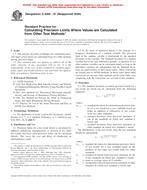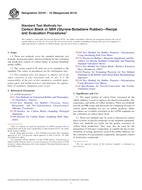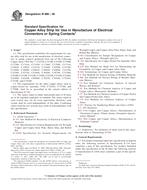1.1 These practices cover a guide for the multivariate calibration of infrared spectrometers used in determining the physical or chemical characteristics of materials. These practices are applicable to analyses conducted in the near infrared (NIR) spectral region (roughly 780 to 2500 nm) through the mid infrared (MIR) spectral region (roughly 4000 to 400 cm-1).
Note 1 – While the practices described herein deal specifically with mid- and near-infrared analysis, much of the mathematical and procedural detail contained herein is also applicable for multivariate quantitative analysis done using other forms of spectroscopy. The user is cautioned that typical and best practices for multivariate quantitative analysis using other forms of spectroscopy may differ from practices described herein for mid- and near-infrared spectroscopies.
1.2 Procedures for collecting and treating data for developing IR calibrations are outlined. Definitions, terms, and calibration techniques are described. Criteria for validating the performance of the calibration model are described.
1.3 The implementation of these practices require that the IR spectrometer has been installed in compliance with the manufacturer’s specifications. In addition, it assumes that, at the times of calibration and of validation, the analyzer is operating at the conditions specified by the manufacturer.
1.4 These practices cover techniques that are routinely applied in the near and mid infrared spectral regions for quantitative analysis. The practices outlined cover the general cases for coarse solids, fine ground solids, and liquids. All techniques covered require the use of a computer for data collection and analysis.
1.5 These practices provide a questionnaire against which multivariate calibrations can be examined to determine if they conform to the requirements defined herein.
1.6 For some multivariate spectroscopic analyses, interferences and matrix effects are sufficiently small that it is possible to calibrate using mixtures that contain substantially fewer chemical components than the samples that will ultimately be analyzed. While these surrogate methods generally make use of the multivariate mathematics described herein, they do not conform to procedures described herein, specifically with respect to the handling of outliers. Surrogate methods may indicate that they make use of the mathematics described herein, but they should not claim to follow the procedures described herein.
1.7 This standard does not purport to address all of the safety concerns, if any, associated with its use. It is the responsibility of the user of this standard to establish appropriate safety and health practices and determine the applicability of regulatory limitations prior to use.
Product Details
- Published:
- 12/01/2004
- Number of Pages:
- 28
- File Size:
- 1 file , 290 KB


